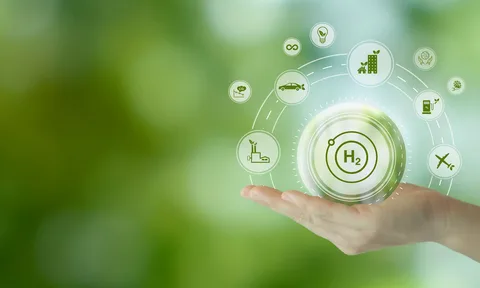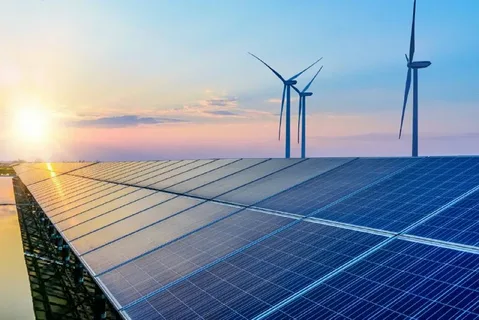
Clean Energy: An Effective Solution to the Water Crisis
Introduction
The world is facing a dual challenge when it comes to water and energy. The interdependency of these two resources is becoming increasingly evident, with significant implications for both water and energy security. As the global population grows and economies expand, the demand for both water and energy is on the rise. At the same time, climate change is exacerbating water scarcity and putting additional stress on energy systems. However, there is a glimmer of hope – clean energy can play a vital role in easing the water crisis.
The Water-Energy Nexus

The relationship between water and energy is known as the water-energy nexus. It refers to the intricate connection between the availability and use of water resources and the production, distribution, and consumption of energy. The energy sector is a major consumer of water, accounting for approximately 40% of total water withdrawals in the United States alone. This high water demand is mainly driven by conventional power generation, particularly thermal power plants that run on coal or gas.
( Click here to know more about water energy nexus )
The Impact of Climate Change

Climate change is exacerbating the water crisis, making water flows more erratic and increasing the frequency and severity of droughts. Nearly two-thirds of the world’s population already experiences severe water scarcity for at least one month each year. In the face of these challenges, it is crucial to find sustainable solutions that reduce water consumption in the energy sector.
Clean Energy to the Rescue
One of the most promising solutions to the water crisis lies in the rapid deployment of clean energy sources. Unlike conventional power generation, which relies heavily on water for cooling and other processes, clean energy technologies such as wind and solar power have minimal water requirements. This makes them a more sustainable and water-efficient choice for power generation.
The Water Savings Potential of Clean Energy

According to the International Energy Agency (IEA), the increased use of renewable energy sources in the energy sector can reduce water consumption by 15% by 2030, with the power sector experiencing the most significant water savings. Transitioning away from coal-fired power plants to solar photovoltaics (PV) and wind turbines can lead to substantial reductions in water withdrawals. In fact, the IEA predicts that water withdrawals in the power sector could decrease by nearly 15% as coal-fired power generation is replaced by clean energy sources such as solar PV and wind.
The Role of Energy Efficiency
In addition to the deployment of clean energy sources, energy efficiency also plays a crucial role in reducing water consumption in the energy sector. By improving the efficiency of energy systems, less energy is needed to meet global demand, resulting in reduced water requirements. Energy-efficient technologies and practices, such as smart grids, LED lighting, and energy-efficient appliances, can contribute to significant water savings by reducing overall energy demand.
The Water-Intensiveness of Different Energy Sources
While clean energy sources like wind and solar have minimal water requirements, it is essential to consider the water-intensiveness of other low-carbon technologies. Some renewable energy technologies, such as biofuels, concentrating solar power (CSP), carbon capture, utilization, and storage (CCUS), and nuclear power, have relatively higher water demands compared to wind and solar. It is crucial to assess the water impacts of these technologies and ensure proper management to avoid exacerbating water stress.
The Challenge of “Green” Hydrogen

One nascent technology that is gaining attention is the production of “green” hydrogen using electrolysis. While hydrogen has the potential to be a clean and versatile energy carrier, its production through electrolysis requires a significant amount of water. This poses a challenge as the world grapples with water scarcity. Innovative solutions and technologies that minimize water usage in “green” hydrogen production will be crucial for its long-term viability.
( Click here to know more about Green Hydrogen )
The Need for Integrated Approaches
Addressing the water crisis and achieving sustainable energy systems requires an integrated approach. Tackling climate change, ensuring universal access to energy, and reducing the impacts of air pollution are all interconnected goals that need to be addressed simultaneously. The Sustainable Development Scenario (SDS) proposed by the IEA offers a comprehensive framework that combines efforts to combat climate change, increase energy access, and reduce water withdrawals.
The Role of Solar PV and Wind

The increased deployment of solar PV and wind power is a key component of the SDS. These clean energy sources not only reduce carbon emissions but also contribute to significant water savings. By shifting away from coal-fired power generation and embracing solar PV and wind, countries can achieve substantial reductions in water withdrawals by the energy sector. The scalability and versatility of solar PV and wind technologies make them ideal solutions for both water and energy security.
The Importance of Policy and Planning
To harness the full potential of clean energy in easing the water crisis, governments and policymakers must prioritize renewable energy deployment and consider the water impacts of energy decisions. Integrated planning that accounts for water stress, regional water availability, and the water-intensiveness of different energy sources is essential. By aligning clean energy goals with water sustainability objectives, policymakers can ensure a more sustainable future for both water and energy systems.
Conclusion
The water crisis and the need for clean energy are two pressing challenges that the world faces. However, by embracing clean energy sources and implementing sustainable water management practices, we can address both issues simultaneously. The transition to clean energy technologies such as solar PV and wind power offers significant water savings and contributes to a more sustainable and resilient future. It is crucial for policymakers, businesses, and individuals to recognize the interdependency of water and energy and work towards integrated solutions that promote a greener and water-secure world.
References
- https://www.iea.org
- https://www.energy.ox.ac.uk
- https://electricenergyonline.com
- https://kleinmanenergy.upenn.edu

